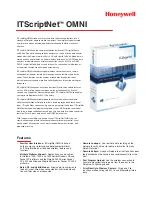
User’s Guide
67
Internet Security and Privacy
Biological viruses have proven to be tenacious: modern medicine’s success in
fighting viral infection has, so far, been rather limited. Fortunately, PC viruses
differ from biological viruses in that they are easier to combat, once they are
identified.
Are viruses really that dangerous?
Bear in mind that your chances of contracting a PC virus are slim, and your
chances of contracting a truly vicious virus even more so. The scariest viruses
are malicious programs that intentionally corrupt or delete the data on your
PC. More benign viruses might simply display a message on your monitor or
make a strange sound, and then disappear. But even the most benign virus
occupies some disk space, and many remain in memory, which can cause your
PC to behave erratically or crash.
Types of viruses
There are three main types of viruses:
• File or program viruses: A program virus attaches itself to a specific
program on your PC. Since many PC’s share certain files in common (for
example, the DOS program command.com, or the command “dir”), which
make these files tempting targets for virus programmers. Program viruses
are dormant until you run the associated program.
• Boot viruses (or Master Boot Record viruses): The boot sector of a disk is
a physical location on the disk that contains information about the disk and
the files it contains. All disks and drives have a boot sector, even if they
aren’t “bootable.” A boot virus infects the boot sector of floppy disks and
hard drives, and are activated when you access or boot from an afflicted
disk.
• Macro viruses: Macro viruses are contained in document files, such as
Microsoft Word or Excel files. These files can contain macros that can
automate your work—but macros can also be written to do damage to your
PC. Macro viruses are activated when you open an infected document file.
A final word should be said about hoax “viruses,” which are not viruses in the
strictest sense of the term. A hoax virus replicates a hoax, spread by
misinformed (if well intentioned) e-mail claiming that if you download a
certain file, or if you receive an e-mail with a certain subject line, you will infect
your PC with a virus. E-mail messages are always safe; they are simple text
files, and cannot contain viruses. Attachments to e-mail messages (an
attachment is a file that a message sender attaches to a message—it is
downloaded to your PC when you retrieve the message) can contain viruses.
(If Email file access is turned on in Virus Sentry, Guard Dog automatically
scans e-mail attachments before you open them.)
Summary of Contents for Guard Dog
Page 1: ...McAfee Guard Dog User s Guide...
Page 10: ...Table of Contents x McAfee Guard Dog Technical support 74 McAfee training 74...
Page 22: ...Installing Guard Dog 12 McAfee Guard Dog...
Page 36: ...Quick Tour of Guard Dog 26 McAfee Guard Dog...
Page 44: ...Customizing Guard Dog 34 McAfee Guard Dog...
Page 52: ...Privacy Features 42 McAfee Guard Dog...
Page 62: ...Security Features 52 McAfee Guard Dog...
Page 68: ...Using AntiVirus Features 58 McAfee Guard Dog...
Page 82: ...Internet Security and Privacy 72 McAfee Guard Dog...













































